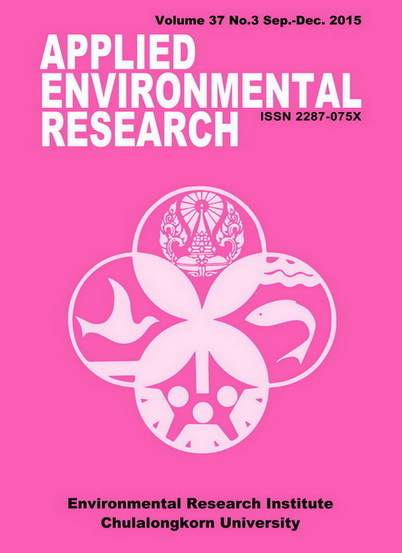Determination of Polycyclic Aromatic Hydrocarbons (PAHs) on Selected Dumpsites in Abeokuta Metropolis, SW, Nigeria
Main Article Content
Abstract
Knowledge of the concentration of polycyclic aromatic hydrocarbon (PAHs) in urban soils remains insufficient in developing countries like Nigeria despite their toxic effects and suspected human carcinogens, mutagens and endocrine disruption. This study aimed to determine the concentration of PAHs in soil of three dumpsites in Abeokuta metropolis, Ogun State, Nigeria. Concentrations of individual PAHs were determined using Gas Chromatography Flame Ionization Detector (GC-FID). The total PAHs concentrations at 0-15 cm depth were 29.0 mg kg-1, 41.6 mg kg-1 and 11.9 mg kg-1 for Igbore, Saje and Alogi dumpsites respectively while the corresponding total PAHs concentrations at 15-30 cm depth were 9.3 mg kg-1, 28.3 mg kg-1 and 11.0 mg kg-1 respectively. These concentrations were slightly lower than the Dutch guideline limits of 40 mg kg-1 except for that of Saje at 0-15 cm depth. The amounts of fluoranthene at Igbore dumpsite in the two depths were 23.64 mg kg-1 and 8.02 mg kg-1, with a total sum of 10 PAHs compounds of 19.12 mg kg-1. The results showed that the highest concentration of a single PAHs compound was at Saje dump-site with fluoranthene value of 33.75 mg kg-1 and 22.74 mg kg-1 at the depths of 0-15 and 15-30 cm respectively. Isomer ratio for fluoranthene/pyrene was 2.69 at Alogi dumpsite, which suggested that the PAHs were from pyrogenic sources. Carcinogenic PAHs constituted about 1.29-15.69 % of the total PAHs detected in the dumpsite raising concerns of human exposure through the food chain.
Article Details

This work is licensed under a Creative Commons Attribution-NonCommercial 4.0 International License.
Published articles are under the copyright of the Applied Environmental Research effective when the article is accepted for publication thus granting Applied Environmental Research all rights for the work so that both parties may be protected from the consequences of unauthorized use. Partially or totally publication of an article elsewhere is possible only after the consent from the editors.

